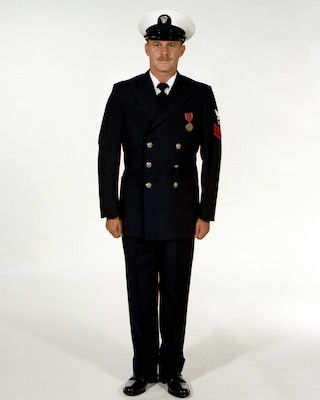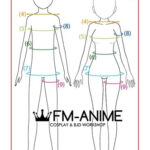The early 1970s marked a pivotal era for the United States Navy, particularly concerning recruitment and retention strategies amidst President Nixon’s plan to transition to an all-volunteer military, even as the Vietnam War continued. The Department of Defense aimed for a full transition by July 1, 1973. While the Navy didn’t draft individuals directly, it was estimated that about a third of its recruits were draft-motivated, seeking alternatives to Army service, which faced the heaviest Vietnam casualties. Enhancing the Navy’s appeal became crucial, driving various programs and incentives, including a significant reconsideration of Navy Enlisted Uniforms.
At the heart of this reconsideration were the traditional “crackerjacks” and bell-bottom trousers, the standard navy enlisted uniforms for Sailors up to grade E-6. These iconic “bells” had been debated for years, but a 1970 Navy-wide survey by the Navy Personnel Research and Development Laboratory highlighted strong sentiment for change. Out of 1,200 officers and 1,700 enlisted personnel surveyed, 80% of enlisted Sailors favored uniform modifications. Junior officers largely supported adopting an officer-style uniform for all Navy ranks. Notably, 92% of officers and chief petty officers (CPOs) were content with their service dress blues, indicating the push for change was primarily from the enlisted ranks regarding their navy enlisted uniforms.
Master Chief Petty Officer of the Navy (MCPON) John “Jack” D. Whittet, advocating for change, informed Chief of Naval Operations (CNO) Adm. Elmo R. Zumwalt Jr. about enlisted Sailors’ complaints that “bells” didn’t make them feel like men. Adding to this, CNO Zumwalt received letters from Navy spouses expressing embarrassment about their husbands wearing “crackerjacks” in public, wishing for more mature attire. Amidst growing anti-military sentiment, Sailors in their traditional navy enlisted uniforms sometimes faced ridicule.
 Navy enlisted personnel wearing the service dress uniform, circa 1973, a change initiated by Z-Gram 87 to modernize navy enlisted uniforms.
Navy enlisted personnel wearing the service dress uniform, circa 1973, a change initiated by Z-Gram 87 to modernize navy enlisted uniforms.
On June 13, 1971, Adm. Zumwalt issued Z-Gram 87, a directive to the Fleet announcing a significant uniform change. This order aimed to unify the Navy by introducing a common uniform type for all personnel, from recruits to admirals. Effective July 1, 1973, recruits would receive the new uniform, and all Sailors were required to adopt the new service dress blues by July 1, 1975. This included both winter and summer weight versions. The announcement also signaled the phasing out of khaki service dress for officers and CPOs, and service dress white uniforms for CPOs, by the same date. A key focus during the service dress blues revision was ensuring clear rank distinction through buttons and hat insignia. Lower-grade enlisted personnel (E-1 to E-6) would wear silver buttons, while officers and CPOs would wear gold. For enlisted headwear, the CPO/officer combination cap, or “hard hat,” was adopted, but with a new silver hat insignia (eagle and “USN” letters) and silver chin strap buttons for grades E-6 and below. Rating insignia, chevrons, and service hash marks remained unchanged, positioned on the left sleeve as before. Zumwalt emphasized these changes aimed to align the Navy with other services by establishing a single uniform style across ranks, fostering unity and common purpose within the Navy. The New York Times covered Z-Gram 87 on June 15, 1971, in an article titled “Navy to Scuttle Old Sailor Suit,” followed by a July 25 piece, “Sailors Unhappy about Shedding Bell-Bottoms; Officers Want to Keep Their Uniforms Distinctive,” reflecting initial reactions and the debates that ensued regarding the shift in navy enlisted uniforms.
The uniform regulations introduced by Z-Gram 87 brought in what became known as the “salt and pepper” uniform: white shirts with navy blue trousers or skirts. This marked the beginning of over a decade of considerable change in Navy uniform policies. The dungaree working uniform also transitioned from denim to a more practical 50-50 cotton-nylon blend. This new working uniform featured a light blue, two-pocket, front-buttoning shirt and dark blue straight-legged trousers with creases, intended to be more presentable for wear on base and commuting to duty. However, the synthetic blend proved problematic on ships due to flammability concerns. More broadly, the high synthetic content in the new uniform materials impacted their fit and comfort.
 Chief petty officers in men’s service dress blue uniforms in 1984, highlighting the gold buttons distinguishing them from navy enlisted uniforms of lower grades.
Chief petty officers in men’s service dress blue uniforms in 1984, highlighting the gold buttons distinguishing them from navy enlisted uniforms of lower grades.
Leading up to these navy enlisted uniform changes, several Z-grams were issued to enhance the Navy’s attractiveness to potential recruits. For example, the late 1960s and early 1970s saw long hair and beards become fashionable in civilian society. While civilian-style long hair remained unauthorized, Z-Gram 70 addressed haircut standards and allowed beards and sideburns, stipulating they be “well groomed and neatly trimmed.” Despite criticism, Zumwalt defended this policy, noting that beards were technically always permitted but often disallowed by commanding officers. He clarified his Z-gram simply reinforced existing regulations on neatly trimmed beards, humorously recounting how his predecessors had remonstrated with him, only to be shown portraits of earlier CNOs sporting long beards.
Despite efforts to improve Sailor life, some individuals misused the new regulations. In an August 1971 All Hands interview, MCPON Whittet criticized “thoughtless individuals” for “abusing the trust and respect given them” by violating uniform regulations, particularly misusing the dungaree working uniform as a liberty uniform.
Resistance to Zumwalt’s changes, including the alterations to navy enlisted uniforms, came from “old salts” across the Navy. However, a spring 1971 poll indicated that 86% of enlisted personnel and 80% of officers approved of the new policies overall. Dissatisfaction was concentrated among senior personnel, both enlisted and officer ranks. The rapid pace and volume of changes, rather than the changes themselves, largely fueled this opposition. Commanding officers and senior enlisted leaders struggled to manage the influx of Z-grams and their impact on command policy. A perception arose that Z-grams directly targeted Sailors, bypassing the traditional chain of command, which irritated commanding officers used to established procedures. Senior petty officers found themselves mediating between junior personnel eager to test the limits of new regulations—especially grooming standards—and officers aiming to maintain discipline. Zumwalt defended his initiatives as an effort to foster respect for individual dignity and worth at all levels.
Upon leaving office on July 1, 1974, Zumwalt rescinded all 121 of his Z-grams, hoping his reforms would endure. While many policies, such as improved opportunities for minorities and women, did persist, the navy enlisted uniform changes introduced by Z-Gram 87 were not permanent. In 1986, the bell-bottom 13-button trousers and “crackerjack” uniform returned, following advocacy for naval tradition. Further modifications, including a safer version of the enlisted shipboard working uniform, followed, illustrating the ongoing evolution of navy enlisted uniforms and naval tradition.

